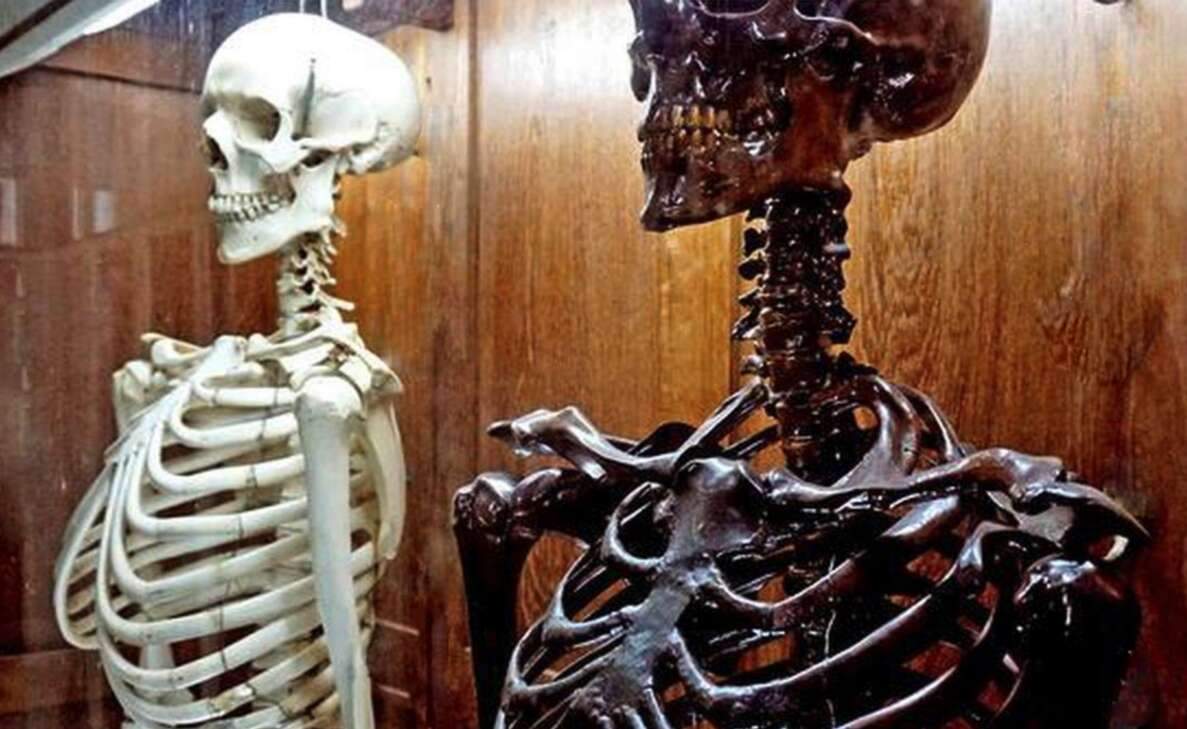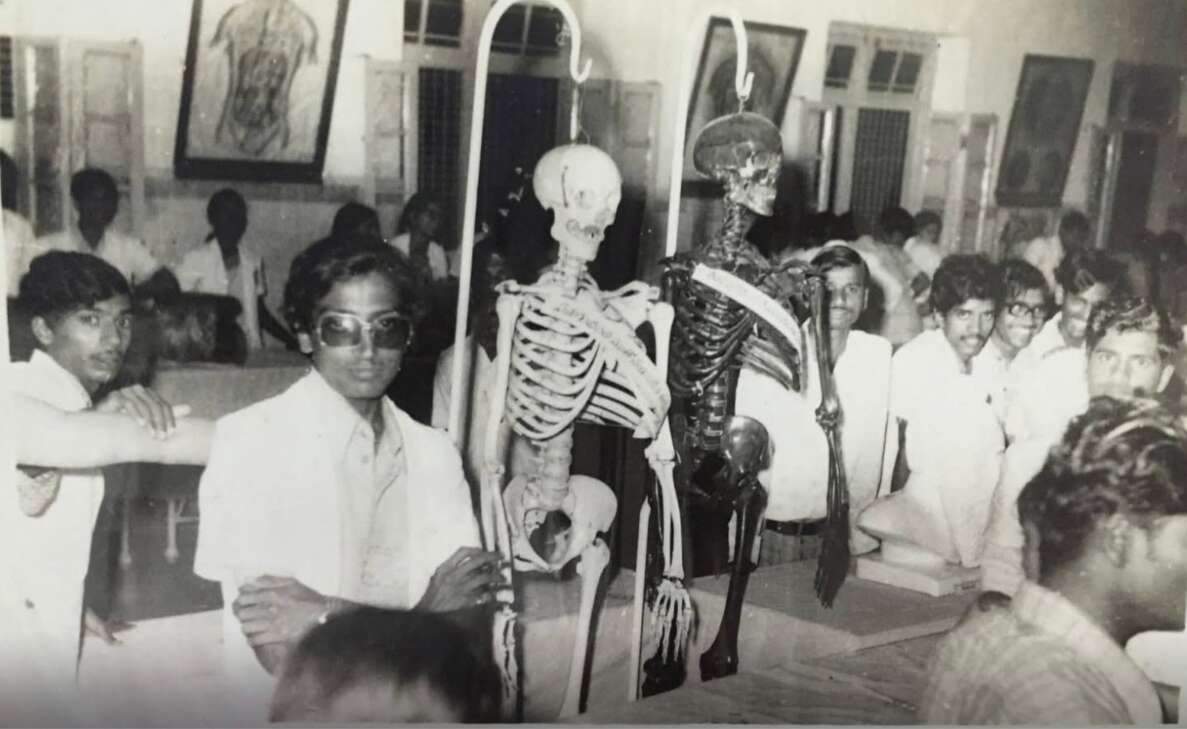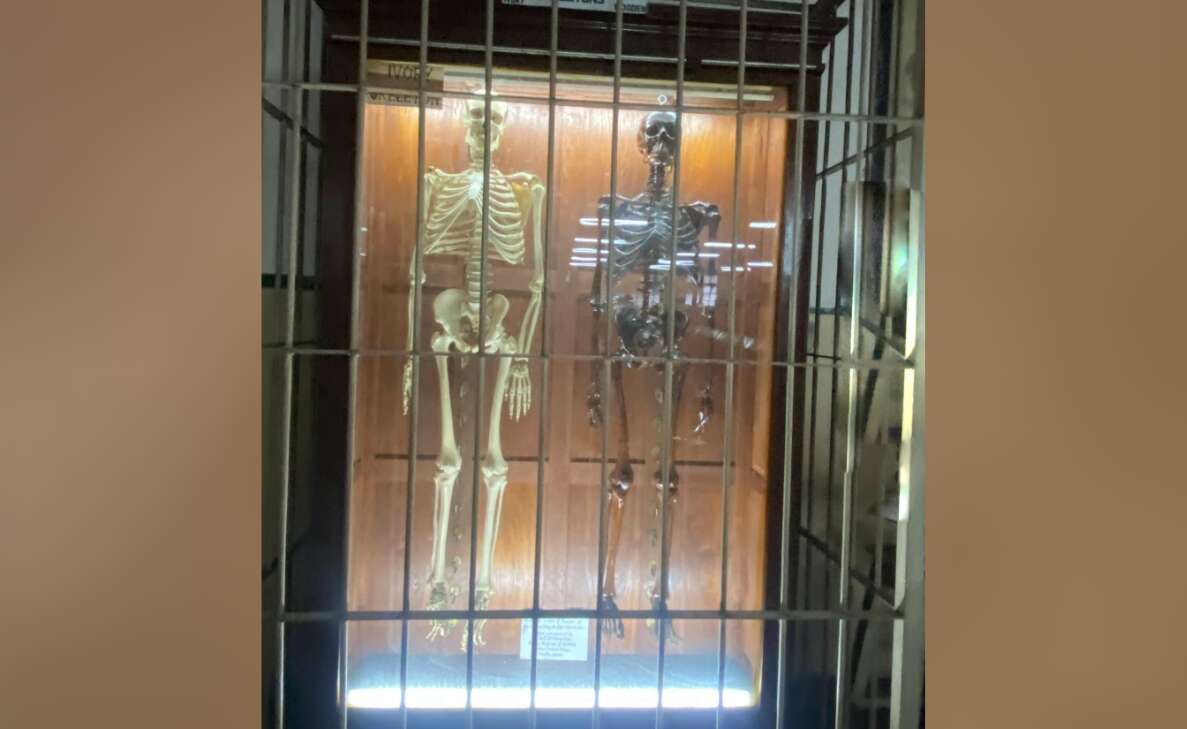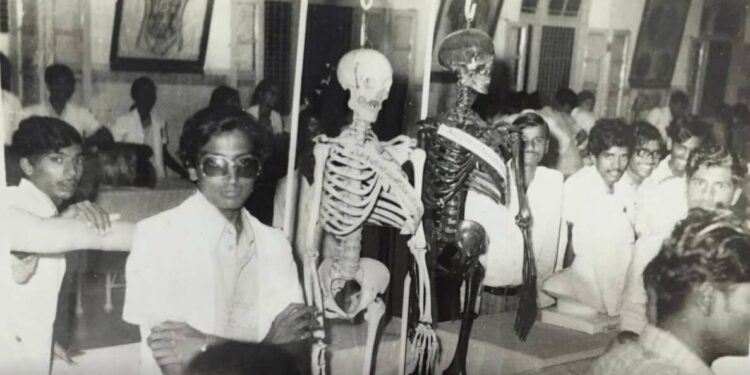To have ‘skeletons in the cupboard’ is an old expression for hidden secrets kept in the family and said to be locked away in a cupboard so nobody will know. In its 100th year, Andhra Medical College in Visakhapatnam has its own ‘skeletons in the cupboard’ except that these are literally skeletons that belong to the Department of Anatomy Museum for the teaching of medical students. The origins of the ivory and wood skeletons go back over 200 years ago.

One of the early professors of Anatomy at the Vizagapatam Medical College was Dr R Krishna Rau who, in 1926, had been an anatomy lecturer at the Tanjore Medical School. He wrote about the ivory and wood skeletons made for the Tanjore Royal Court of Rajah Serfoji (Sarabhoji) in about 1805. The Rajah had an interest in Western medicine despite being of the Kshatriya caste that forbade the touching of skeletons or dead bodies. After many years, the Rajah’s descendants sold the skeletons for Rs 75 to a merchant whose only interest was the ivory for resale. Later, the merchant wanted to dispose of the two skeletons as his family saw them as taboo, one hand-carved from ivory and the other said to be from sandalwood. This is when Dr Rau purchased the two skeletons for Rs 75 and had them located at the Vizagapatam Medical College for the instruction of medical students.

So how did the skeletons come to exist? In May 1805, Rajah Serfoji employed Dr William Somerville Mitchell on a salary of 100 Pagodas to teach him the European System of Medicine. At the same time, he also wrote to Dr James Anderson, a surgeon in the medical department in Fort St George Madras, requesting a copy of John Bell’s Book of Anatomy with its coloured illustrations of the bones and muscles of the figure of a man. He also studied Bell’s Engravings of Bones, Muscles, and Joints and The Principles of Surgery. He closely studied Bell’s Engraving of Arteries because of the coloured illustrations. These books were sent to him from England by his friend and former British Administrator of Tanjore, Benjamin Torin, who lived in retirement. Many letters passed between Serfoji and his friends Anderson and Torin, including the unusual request for a skeleton in ivory, that Serfoji understood would cost £700 and take 3 years to fabricate.
Torin struck a deal with the sculptor William Flaxman to form a correct and perfect skeleton of this excellent wood called Holly to be completed in 12 months for £240. Holly was an easy-to-carve hardwood that, after a dark stain was applied, was a substitute for ebony. A model skeleton (real bones) was purchased for 8 Guineas, and the Medical Department and surgeons at St George’s Hospital, London, periodically examined the work for anatomical accuracy. In a letter of 1806, Torin reported progress in the carving of the wooden skeleton and that the medical faculty of Lisbon had also inspected it for accuracy. With Serfoji’s original request in mind, it was determined that ivory craftsmen in Tanjore could well copy details from the wooden skeleton which was shipped to Madras on the Lady Dundas in late 1807.
Graduates of the Andhra Medical College have many memories of the skeletons and their anatomy classes, and there is a story about one of these skeletons being part of a welcoming prank when the AMC Women’s Hostel first opened in Visakhapatnam in 1942. One weekend, mischievous male undergraduates were said to have convinced the chowkidar to open the museum, where they carefully mounted the skeleton on a bicycle to be wheeled around the hostel. Amusing as it was to bystanders, they unexpectedly bumped into the Professor of Anatomy who was not amused. Since then, the ‘skeletons are in a cupboard’ under lock and key.

Fast forward to the mid-1970s, and Dr Sanjeeva Rao, a former AMC Principal and Professor of Anatomy, would explain to his students that, as ivory was expensive and some bones would need large single-piece ivory carving from an entire tusk, a life-size sandalwood skeleton was first carved, and because of this success, the ivory skeleton was carved with little wastage of precious ivory. Vizag’s Dr Narayana Prasad, as an undergraduate, who once volunteered to show visitors through the AMC Anatomy Museum, had to be cautious about emphasizing the high value of ivory in the skeleton as ivory was still marketable, and the worldwide bans on the sale of ivory products had not yet come into effect. Curious visitors would also question why the wooden skeleton did not smell like sandalwood, and Dr. Sanjeeva Rao suggested applying sandalwood oil to the skeleton which the obedient medical student did. The next day, Anatomy Professor Dr Subhashini brought her mother for a visit when a young Dr Narayana Prasad narrated the story, invited the lady to shake the skeleton’s hand and smell the sandalwood, and she duly reached for the left and detected no smell as -our enterprising undergraduate had applied the sandalwood oil to the right hand only!
As the Andhra Medical College celebrates its centenary year, its alumni plan to release a Centenary AMC book later this year, and surely, the legend of the skeletons from the Tanjore Court and the AMC Anatomy Museum established by Dr R Krishna Rau, AMC’s iconic Professor of Anatomy, will feature to remind its alumni of their undergraduate days. In 1984, the AMC Anatomy Department renamed the Dr R Krishna Rau Anatomy Department in his honour. Should you have an interest in the history of medicine in Visakhapatnam, then visit the Anatomy Museum at Andhra Medical College on its next Open Day and shake hands with one of the ‘skeletons in the cupboard’.
Written by John Castellas, whose family belonged to Vizag for five generations, is a Vizag aficionado who contributes Vizag heritage articles to Yo Vizag and the Waltair Times. He can be contacted at [email protected].
Stray tuned to Yo! Vizag website and Instagram for more heritage stories.










Discussion about this post